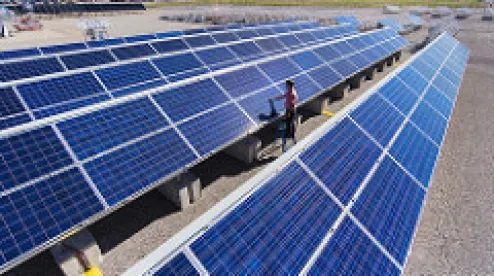AGL is currently undertaking a trial to test whether blockchain technology can assist in creating a mechanism for users to trade surplus electricity generated from rooftop solar panels. This trial will use customer data generated from a previous AGL project involving the use in households of smart air conditioners, batteries and solar panels to simulate peer-to-peer trading, demonstrating what trades would have taken place and the value they would have generated.
It is possible that ‘smart contracts’ could automatically sell excess energy in real time to other users when excess energy from solar panels is generated. The use of blockchain in this way could help individual households to trade their own energy more efficiently, making renewable energy more affordable and better integrated with power grids. This is a relatively novel application of blockchain technology, which is the distributed ledger technology underpinning the digital currency Bitcoin.
This project is designed to help determine the regulatory and system changes needed to make such a market work effectively. The project will also involve IBM Australia and distributed energy advisers Marchment Hill Consulting, and is partly funded by a grant from the Australian Renewable Energy Agency. Ryan Wavish, chief executive of Marchment Hill, says that trading of surplus power between households is relatively common in the Netherlands and some Scandinavian countries that have adjusted their rules to enable the exchange of electricity through “non-traditional” market participants.
The trial is due for completion in July. This should help provide further information for Australian regulators and industry players about how blockchain can be used in practice to facilitate transactions and what problems need to be overcome to allow peer-to-peer trading to thrive.




 />i
/>i


